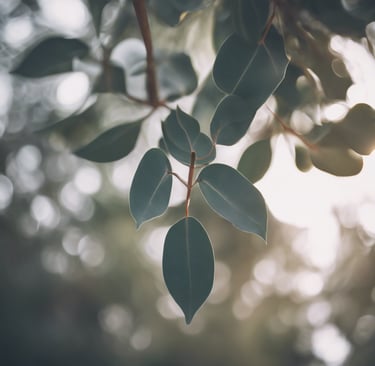Pruning Eucalypts


Eucalypt trees are beautiful additions to any garden, bringing biodiversity, and can be used in stunning cut flower arrangements. However, these majestic trees tend to overgrow, sometimes too large for their surroundings. That's where pruning comes in. Pruning eucalypt trees is essential to maintain their size and shape, ensuring they remain manageable and continue to enhance your garden's beauty.
Pruning eucalypt trees serves several purposes. Firstly, it helps control their size, preventing them from overshadowing other plants or encroaching on structures. Secondly, pruning promotes healthy growth by removing dead or diseased branches, allowing the tree to focus its energy on new growth. Lastly, pruning enhances the tree's aesthetic appeal, shaping it into a more visually pleasing form.
The best time to prune eucalypt trees is during their dormant season, typically in late winter or early spring. Pruning during this time minimizes stress on the tree and encourages new growth once the warmer weather arrives. However, if you notice any dead or diseased branches, removing them promptly, regardless of the season, is essential.
Pruning Techniques
1. Crown Reduction
Crown reduction is a pruning method that involves selectively removing branches from the upper portion of the tree's canopy. This technique helps control the tree's height while maintaining its natural shape. By reducing the overall size of the crown, you can effectively keep the Eucalypt tree small and suitable for a suburban yard.
2. Crown Thinning
Crown thinning is a pruning technique that involves selectively removing branches from the inner portion of the tree's canopy. This method helps increase light penetration and air circulation, which benefits the tree's overall health. By thinning the crown, you can reduce the density of the foliage and maintain a smaller, more manageable size for your Eucalypt tree.
3. Pollarding
Pollarding is a more drastic pruning method that involves cutting the tree's main branches to a specific height. This technique encourages the growth of new shoots from the cut branches, resulting in a dense, compact canopy. Pollarding effectively keeps Eucalypt trees small and creates a unique, sculptural shape in your suburban yard.
4. Espalier
Espalier is a pruning technique that involves training the tree branches to grow horizontally against a support structure, such as a wall or fence. This method is commonly used for fruit trees, but it can also be applied to Eucalypt trees to keep them small and create a decorative feature in your suburban yard. Espalier pruning requires regular maintenance and training to achieve the desired shape.
5. Regular Pruning Maintenance
Regardless of the pruning method, regular maintenance is crucial to keep your Eucalypt trees petite and well-shaped. This includes removing dead, diseased, or crossing branches and maintaining a balanced canopy. Regular pruning also helps stimulate new growth and ensures your Eucalypt trees' overall health and longevity in suburban yards.
Remember, before pruning your Eucalypt trees, it's important to research the specific species and consult with a professional arborist if needed. Each species may have different growth habits and pruning requirements. By employing the correct pruning techniques, you can shape and maintain the size of your Eucalypt trees to suit your suburban yard, creating a beautiful and functional landscape.
Aftercare
Providing proper aftercare is essential once you've finished pruning your eucalypt tree. Water the tree well, especially during dry spells, to promote healthy regrowth. Applying a layer of organic mulch around the tree's base will help retain moisture and suppress weed growth.
Remember, pruning eucalypt trees is an ongoing process. Regular maintenance pruning will keep the tree in check and ensure its long-term health and beauty. By following these pruning techniques and providing the necessary aftercare, you can enjoy the benefits of eucalypt trees in your garden for years.
